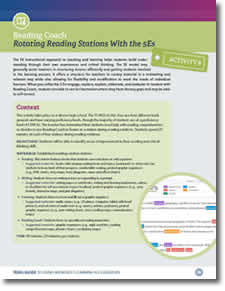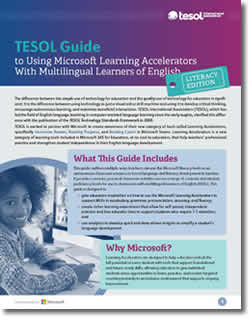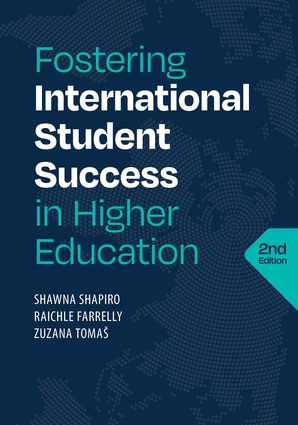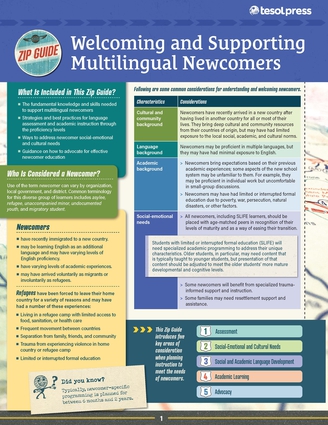Rotating Reading Stations for Building Literacy
by TESOL International Association
As you prepare your classroom for the new school
year and think about all the exciting ways you might grow your students’ love
for reading—while also nurturing their literacy skills and learning
autonomy—take a moment to consider using rotating reading stations. Rotating
stations offer both flexible learning spaces and student choice, which promotes
active learning, independence, and engagement, as well as increasing students’
intrinsic motivation to learn (Digital Promise, 2017a, 2017b).
TESOL recently partnered with Microsoft to create a
free guide that outlines multiple ways teachers can use Microsoft’s
new literacy tools (Immersive
Reader, Reading
Progress, and
Reading
Coach) to boost language and literacy development in tandem. The
guide provides concrete, practical classroom activities across a range of
contexts and student proficiency levels for use in classrooms with multilingual
learners of English (MLEs).
The following activity, from the guide, uses the 5E
instructional model in tandem with Reading Coach to help students see for
themselves where they have literacy gaps, and to help them learn to
self-correct.
About the 5E Instructional Approach
The 5E instructional approach to teaching and
learning helps students build understanding through their own experiences and
critical thinking. Utilizing the 5Es—engage, explore, explain, elaborate, and
evaluate—may generally assist teachers in structuring lessons efficiently and
getting students involved in the learning process. It offers a structure for
teachers to convey material in a motivating and relevant way while also
allowing for flexibility and modification to meet the needs of individual
learners.
About This Activity
This activity takes place in a diverse high school.
The 15 MLEs in this class are from different backgrounds and have varying
proficiency levels, though the majority of students are at a proficiency level
of CEFR A2. The teacher has determined that students need help with reading
comprehension, so decides to use Reading Coach in Teams as a station during
reading rotations. Students spend 20 minutes at each of four stations during
reading rotations.
Utilizing this activity, students will be able to
identify areas of improvement in their reading and critical thinking
skills.
Download the Activity:

Download the full guide for free!

References
Digital Promise. (2017a). Mobility and flexibility. https://bplawassets.learningaccelerator.org/images/Mobility-and-Flexibility-PK-3-Reading-Digital-Promise-Global-v2.pdf
Digital Promise. (2017b). Student choice. https://bplawassets.learningaccelerator.org/images/Student-Choice-PK-3-Reading-Digital-Promise-Global-v2.pdf
TESOL Blogs
Interested in writing a blog for TESOL?
Read the submission guidelines and send us your post!
Check out some of the most recent TESOL Blogs:
|
Project-Based Language Learning for Writing, by Betsy Gilliland

What do the following situations have in common?
- High school students interview senior citizens in their community about what their hometown was like 50 years ago, write up the stories, and create a book that is shared with the elders and with primary school children studying local history.
- University students research the challenges international students at their college face during their first semester, investigate resources available on campus and in town to address those challenges, and create a website that the university’s international student services office can share with prospective students before they arrive.
- Adult immigrant English as a second language students consult with their neighbors about home remedies for common ailments, replicate the remedies and carefully measure the ingredients, and create an interactive ebook with recipes for treating everyday illnesses in culturally diverse ways.
Read more. |
|
Terminology Matters: What Do You Call Your (English) Learners?, by Naashia Mohamed

English learner. Emergent bilingual. Multilingual learner. ESOL student. Dual language learner. Plurilingual learner. If you are in the field of educating students for whom English is an additional language, you are most likely familiar with these, and many more other terms used to refer to this particular group of learners. Your choice of term may depend on personal preference, your organization, the age of the learner, your geographical context, and other factors. But do these terms all mean the same? Are there things we need to consider when we choose to use one term over another? In this blog, I want to explore a few of the commonly used labels to refer to English learners and discuss some of their implications. Read more. |
|
Rereading Harry Potter: Nostalgic Literacy, by Spencer Salas

It’s July here in Charlotte, North Carolina. This week we’ve had a series of evening thunderstorms which are always welcome in the summertime when everything slows down in the heat of the day and the red clay soil of the Piedmont is tired and thirsty. During one of these heavy downpours, I started channel surfing from my living room couch and came across Harry Potter and the Half-Blood Prince. Read more. |
TESOL Bookstore

Featured Resources from TESOL Press
ELT Basics is an invaluable resource for those seeking a straightforward, practical, and foundational understanding of English language teaching. This book covers a broad range of important topics, such as what it means to “know” a language, how people learn new languages, and what teachers can do to teach English effectively. Whether you’re looking for a basic understanding of ELT or considering a career in language teaching but want to know more first, this book will teach you about language acquisition as well as how to plan, instruct, and assess multilingual learners of English.
 Fostering International Student Success in Higher Education, Second Edition
Fostering International Student Success in Higher Education, Second Edition
Shawna Shapiro, Raichle Farrelly, Zuzana Tomaš
(Copublished by TESOL and NAFSA)
The increase in the number of international students attending English-dominant schools brings benefits as well as challenges for institutions. Shapiro, Farrelly, and Tomaš provide a lively, informative discussion that answers the questions instructors commonly ask when seeking to ensure success for these students: What do I do to help students be successful in U.S. academic culture? How can I ensure that the content for my course is comprehensible to students who are still learning English? How do I design assignments and assessments that are fair while still acknowledging the difficulty of doing academic work in a second or foreign language? How might I treat international students as a linguistic and cultural asset in the classroom, and help them to become institutionally integrated?
 TESOL Zip Guide:
TESOL Zip Guide:
Welcoming and Supporting Multilingual Newcomers
Amber Warren, Melissa Hauke, Jan By Ying Hui-Michael, Adrienne Johnson
Newcomers are students who have recently immigrated to a new country, may be learning English as an additional language, and may have varying levels of English proficiency. This guide introduces five key areas of consideration when planning instruction to meet the unique social-emotional, linguistic, cultural, academic, and programming needs of multilingual learners of English who are newcomers. It includes strategies and best practices for language assessment and academic instruction through the proficiency levels, and guidance on how to advocate for effective newcomer education.